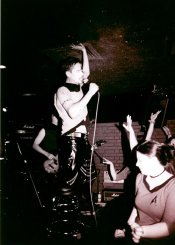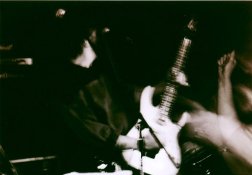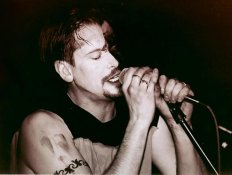What a stupid argument. Who the heck is going to use a stupid tripod to shoot people in a low light situation? People who take stupid, boring, terrible, cliche photos, that's who. Those fools who distract from the whole party, make themselves and their pictures the center of attention, and make me pray that I puke during the exposure...and then want to talk to you all night about a bunch of technical crap when they see you have a camera, and think YOU have a bad attitude when you say something to the effect of, "A camera is a camera". Who wants to look at a bunch of stupid people standing in a stupid group smiling at your camera that will end up printed on a plastic plate, stuffed in a drawer, left behind by your kids when you die, and sold for 5 cents to me at an estate sale? If you want stupid pictures of the family making a stupid pose for the album, just use a stupid point and shoot, and/or flash on your good camera. If you want to plan a group shot, sure, use your tripod; whatever. If you were going to do that, why would you need a fast film, though? That discussion belongs in the cheesy family photos forum, and makes no sense here. If you want candids of people in motion in available light, which has to be the issue here, as high ISO films are being discussed, you cannot use a tripod. What a stupid concept! Well, you can, but your pictures will be stupid, and suck. This is the same stupid point someone was trying to make in that other stupid post.
Also, the idea that mirror slap makes no difference is ludicrous. Sometimes I wonder if the people who post this crap have ever taken a photo in the real world...and if they have, I wonder if they have ever printed them.
Welcome to the Internet, where some stranger is always on a crusade of some sort...and just as ridiculous as the actual Crusades. "Lets put this myth to rest." "This entire no-moving-mirror-makes-better-handholding thingy is silly. Extremely silly. It's time it stops." What stupid, arrogant, absolutist statements based solely on one person's - excuse me, one stranger on the Internet who none of us know from Adam's - opinion! You ask a question about high ISO film and you get people saying that it sucks and asking why you would use it in the first place. You ask a question about whether you prefer high ISOs on digital or film, and you get someone telling you that high ISOs are for lazy people, and a devolution into a general film/digital debate. You mention that rangefinders shake less, and you get someone saying no, they don't, and you're an fool for believing that they do. Go figure. It is the same crap that 35mm shooters have had to deal with since day one from "real" photographers. You'd think over 75 years of stellar 35mm photography that knocks the sox off of anything shot on a tripod in this time would shut these "artists" and their technical arguments up....
Happy fricking Boxing Day.







